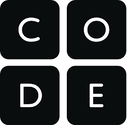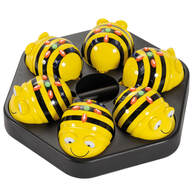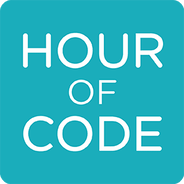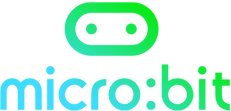Coding and STEAM TEAMS

Coding plays a significant role in the STEM (Science, Technology, Engineering, and Mathematics) classroom. As such, it was a very important component of our STEAM TEAM project.
Here are 10 key reasons to teach coding in your classroom:
Here are 10 key reasons to teach coding in your classroom:
- Promoting Computational Thinking: Coding helps students develop computational thinking skills, which involve breaking down complex problems into smaller, more manageable parts. This type of problem-solving is fundamental in STEM fields.
- Enhancing Problem-Solving Skills: Coding challenges students to solve problems creatively, fostering problem-solving skills that are essential in science, technology, engineering, and mathematics.
- Fostering Logic and Critical Thinking: Coding requires logical thinking and precision, which are core skills needed in STEM subjects. It encourages students to think critically and find efficient solutions to issues.
- Hands-On Learning: Coding allows for hands-on, interactive learning experiences. Students can experiment, make mistakes, and learn from them, which is a valuable part of the learning process in STEM.
- Interdisciplinary Connections: Coding often involves working on projects that incorporate elements from multiple STEM disciplines. For example, creating a robotics program involves elements of math, engineering, and technology
- Digital Literacy: In today's technology-driven world, digital literacy is crucial. Learning to code helps students become more proficient with computers and digital devices, which is foundational for STEM careers.
- Career Preparation: Many STEM careers, particularly in technology and engineering, require coding skills. Learning to code in a STEM classroom can prepare students for future career opportunities.
- Creativity and Innovation: Coding allows students to express their creativity and develop innovative solutions to problems. These skills are valuable in STEM fields where innovation is highly prized.
- Real-World Applications: Coding can be used to solve real-world problems, from designing software to analyze scientific data to developing engineering simulations. This practical application makes learning more engaging.
- Collaboration and Teamwork: Many coding projects in STEM classrooms are collaborative, fostering teamwork and communication skills that are essential in STEM careers.
Resources for teaching coding in the primary classroom
Here are a selection of resources that we explored in our classrooms as part of our project.
These activites also feature 'unplugged' activities: Computational thinking can be explored through the use of ‘unplugged’ activities in the classroom, requiring no access to digital devices. This is seen as a useful and important step in progressing students’ understanding of computational thinking. Unplugged activities are also ideal for teachers who may have limited devices or access during the week.
Progression to ‘plugged’ activities involving the use of digital devices and coding activity is a natural next step. Engaging in coding and computational thinking can support many areas of the STEM classroom.
Progression to ‘plugged’ activities involving the use of digital devices and coding activity is a natural next step. Engaging in coding and computational thinking can support many areas of the STEM classroom.
|
SCRATCH:
(https://scratch.mit.edu/): Scratch is a block-based visual programming language designed for children. It's a great way to introduce coding concepts and creativity. It is probably one of the most widely used platforms and can be easily changed to suit any language. Scratch also offers printable coding activity cards that can be used in the classroom to teach specific concepts. (https://scratch.mit.edu/info/cards/) |
|
CODE.ORG
Code.org (https://code.org/): Code.org offers a wide range of coding tutorials and activities for students of all ages. Code.org is an excellent resource for teaching aspects to computer science in schools (with an additional focus on increasing participation by young women). Code.org also organizes the annual Hour of Code campaign, |
|
BEE-BOTS
Bee-Bots were used by all partners in the project. A Bee-Bot is a programmable floor robot, designed specifically for use by young children. They are colorful and very easy to use; this friendly little robot is a perfect tool for teaching sequencing, estimation, problem-solving, and are a perfect beginning to computational thinking, coding and robotics. Bee-Bot can accurately move in steps of 15cm, turn in 90° turns, and remembers up to 40 steps! With a wide range of cross curricular mats to program with, and fun accessories to personalise, Bee-Bot is an excellent programming resource for any classroom. Beebots can be integrated in many areas of the curriculum. There are numerous websites with additional resouces for Beebots. Here is a video from Ireland of Beebots being used in a Junior Infant class (from Oide.ie) |
|
SCRATCH JR.
(https://www.scratchjr.org/) ScratchJr is a simplified version of Scratch designed for younger children, available as an app for tablets. ScratchJr is a visual programming language designed to introduce programming skills to children ages 5–7. The app is considered an introductory programming language. It is available as a free app for iOS, Android and Chromebook. |
|
GOOGLE CS FIRST
CS First is a very comprehensive programme for teaching coding in the upper primary level and early secondary level. It provides an easy-to-use computer science curriculum designed for students in grades 4-8 (ages 9-14) . Teachers use the video content to teach kids coding basics with Scratch for CS First, a special version of the Scratch coding editor inside the CS First website. CS First is available online at http://g.co/csfirst. (Note that while Scratch can be changed into most langauges, the CS First programme is only available in a limited range of langauges e.g in our project it could only be fully explored in English, Spanish and Italian) |
|
. All partners took part in hour of code activitiesHOUR OF CODE:
(www.hourofcode.com) The Hour of Code started as a one-hour introduction to computer science, designed to demystify "code", to show that anybody can learn the basics, and to broaden participation in the field of computer science. It has since become a worldwide effort to celebrate computer science, starting with 1-hour coding activities but expanding to all sorts of community efforts. The website features a wide range of out the tutorials and resources (available in multiple languages). All partners took part in Hour of Code activities. |
|
The BBC Microbit is an excellent way to blend coding to the physical word of robotics. It features Microsoft’s MakeCode editor which is a good way to start programming and get creating with the BBC micro:bit. The colour-coded blocks are similar to those used in Scratch (there is also an extension which allows programming directly from Scratch). A more in-depth look at Microbits can be found in our robotics section.
|







